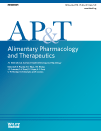 There are trillions of microorganisms in the human microbiome — they outnumber their host’s cells substantially — and their exact role in health and disease is only now starting to be explored. Studies have found that people with non-alcoholic fatty liver disease have a different composition of bacteria in their gut from healthy individuals.[1],[2] However, it is as yet impossible to say why or what direct effect this has. Whatever the reason, changes in the microbiome are unlikely sufficient to cause disease. Instead, an emerging picture of liver disease and cancer sees their development as a process in which various factors — including a high-fat diet, alcoholism, genetic susceptibility and the microbiome — can each contribute to the progression from minor to severe liver damage, and from severe liver damage to cancer.
There are trillions of microorganisms in the human microbiome — they outnumber their host’s cells substantially — and their exact role in health and disease is only now starting to be explored. Studies have found that people with non-alcoholic fatty liver disease have a different composition of bacteria in their gut from healthy individuals.[1],[2] However, it is as yet impossible to say why or what direct effect this has. Whatever the reason, changes in the microbiome are unlikely sufficient to cause disease. Instead, an emerging picture of liver disease and cancer sees their development as a process in which various factors — including a high-fat diet, alcoholism, genetic susceptibility and the microbiome — can each contribute to the progression from minor to severe liver damage, and from severe liver damage to cancer.
The gut microbiome intuitively relates to liver health. As blood leaves the intestines it passes through the liver, carrying nutrients extracted from our food. It also carries our own digestive chemicals as well as fragments of the bacteria that live in the digestive system (such as bits of DNA and cell walls) and their metabolic by-products. Some of these by-products help us to access energy and nutrients in food, but some are toxic. And a few might provoke an inflammatory immune response in the liver — if the inflammation becomes chronic, cancer can be the consequence.
The liver has several crucial functions, and it does more than just filter toxins and produce digestive chemicals. The liver is also an immune organ with an important role in immune surveillance and the management of bacterial balance in the gut. Specialised cells in the liver and intestines monitor the microbiome by keeping tabs on bacterial by-products as they pass through. These cells can detect infections and help to fight them. But they can also pick up on subtler changes in the bacterial populations in the gut. When certain types of bacteria become too numerous — a state called dysbiosis — the immune system becomes activated and triggers inflammation, although at a lower level than it would for an infection. Immune reactions aimed at fighting infectious bacteria and other foreign invaders can have off-target effects that lead to disease.
Cells in the liver express [immune] receptors that bind to bacterial products, and the main culprits are lipopolysaccharides, large molecules that are found in the cell walls of many gram negative bacteria. Another common bacterial product might also serve as a connection between the microbiome and liver disease. The liver generates bile acids, which are stored in the gall bladder and are released into the intestines to digest fatty foods. They act as a kind of digestive detergent, helping the body to take up dietary fat along with fat-soluble vitamins. The acids then get absorbed by the intestines and passed back to the liver, which sends them back to the gall bladder.
Some gut bacteria chemically alter these bile acids to produce secondary bile acids, which are toxic to humans and even to certain bacteria. The most common of these secondary bile acids is deoxycholic acid (DCA). A certain amount of DCA is present in everyone’s digestive system, and at low levels it does not seem to have ill effects. It carries fat in the same way as our own bile acids and follows the same path from gut to liver to gall bladder. But it can cause DNA damage, which in turn can lead to liver damage and even cancer. But the follow up problem is that DCA also causes dysbiosis forming a troublesome feedback loop of further inflammation and further dysbiosis.[3]
There is also some early clinical evidence that specially formulated probiotics — cocktails of good bacteria — can bump the microbiome back into balance. One research group gave people with cirrhosis a probiotic containing Lactobacillus bacteria and found that their blood markers of inflammation decreased along with their cognitive dysfunction (a common symptom of cirrhosis), indicating return of eubiosis has direct effects on liver function.[4]
References
[1] Mouzaki M, Comelli EM, Arendt BM, Bonengel J, Fung SK, Fischer SE, McGilvray ID, Allard JP. Intestinal microbiota in patients with nonalcoholic fatty liver disease. Hepatology. 2013 Jul;58(1):120-7. View Abstract
[2] Raman M, Ahmed I, Gillevet PM, Probert CS, Ratcliffe NM, Smith S, Greenwood R, Sikaroodi M, Lam V, Crotty P, Bailey J, Myers RP, Rioux KP. Fecal microbiome and volatile organic compound metabolome in obese humans with nonalcoholic fatty liver disease. Clin Gastroenterol Hepatol. 2013 Jul;11(7):868-75. View Abstract
[3] Ogilvie LA, Jones BV. Dysbiosis modulates capacity for bile acid modification in the gut microbiomes of patients with inflammatory bowel disease: a mechanism and marker of disease? Gut. 2012 Nov;61(11):1642-3 View Full Paper
[4] Bajaj JS, Heuman DM, Hylemon PB, Sanyal AJ, Puri P, Sterling RK, Luketic V, Stravitz RT, Siddiqui MS, Fuchs M, Thacker LR, Wade JB, Daita K, Sistrun S, White MB, Noble NA, Thorpe C, Kakiyama G, Pandak WM, Sikaroodi M, Gillevet PM. Randomised clinical trial: Lactobacillus GG modulates gut microbiome, metabolome and endotoxemia in patients with cirrhosis. Aliment Pharmacol Ther. 2014 May;39(10):1113-25 View Abstract




